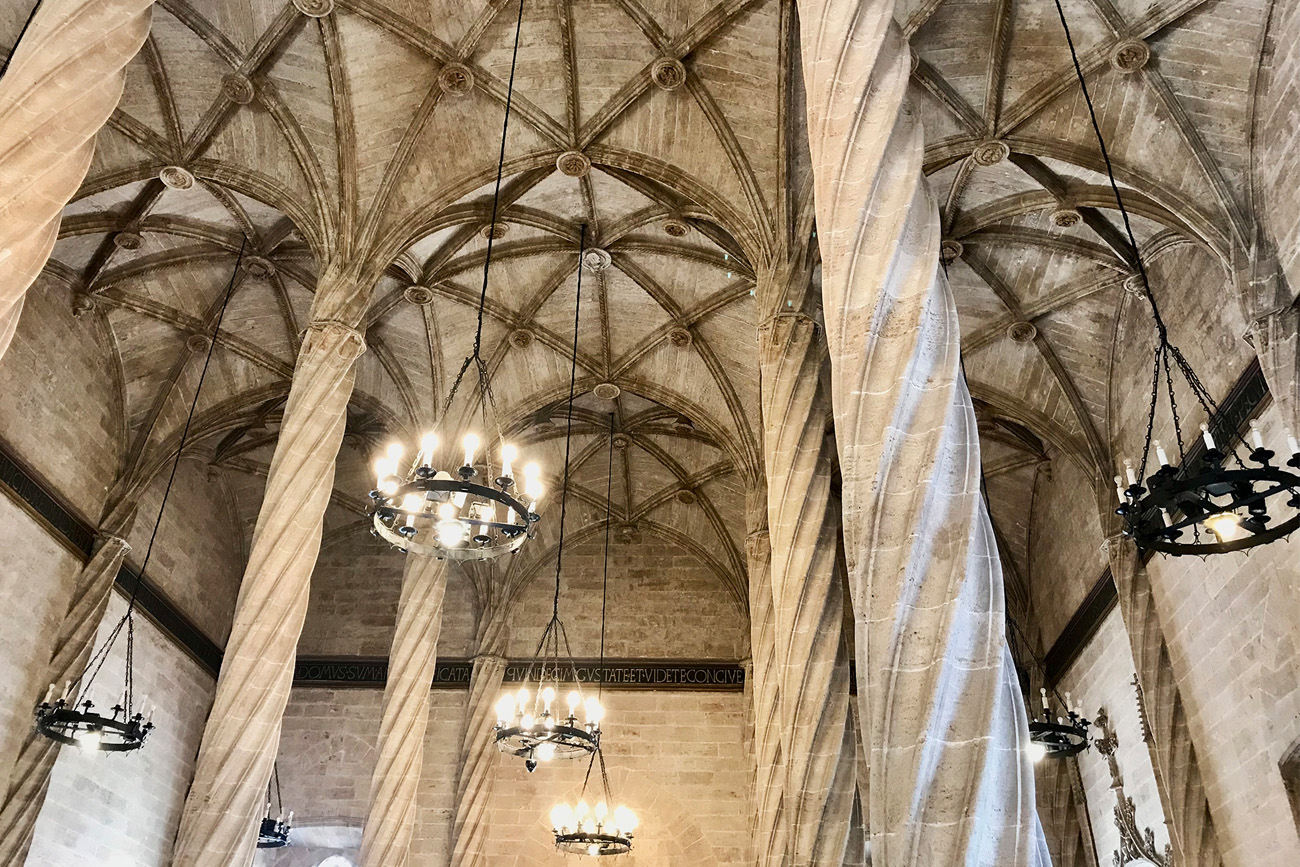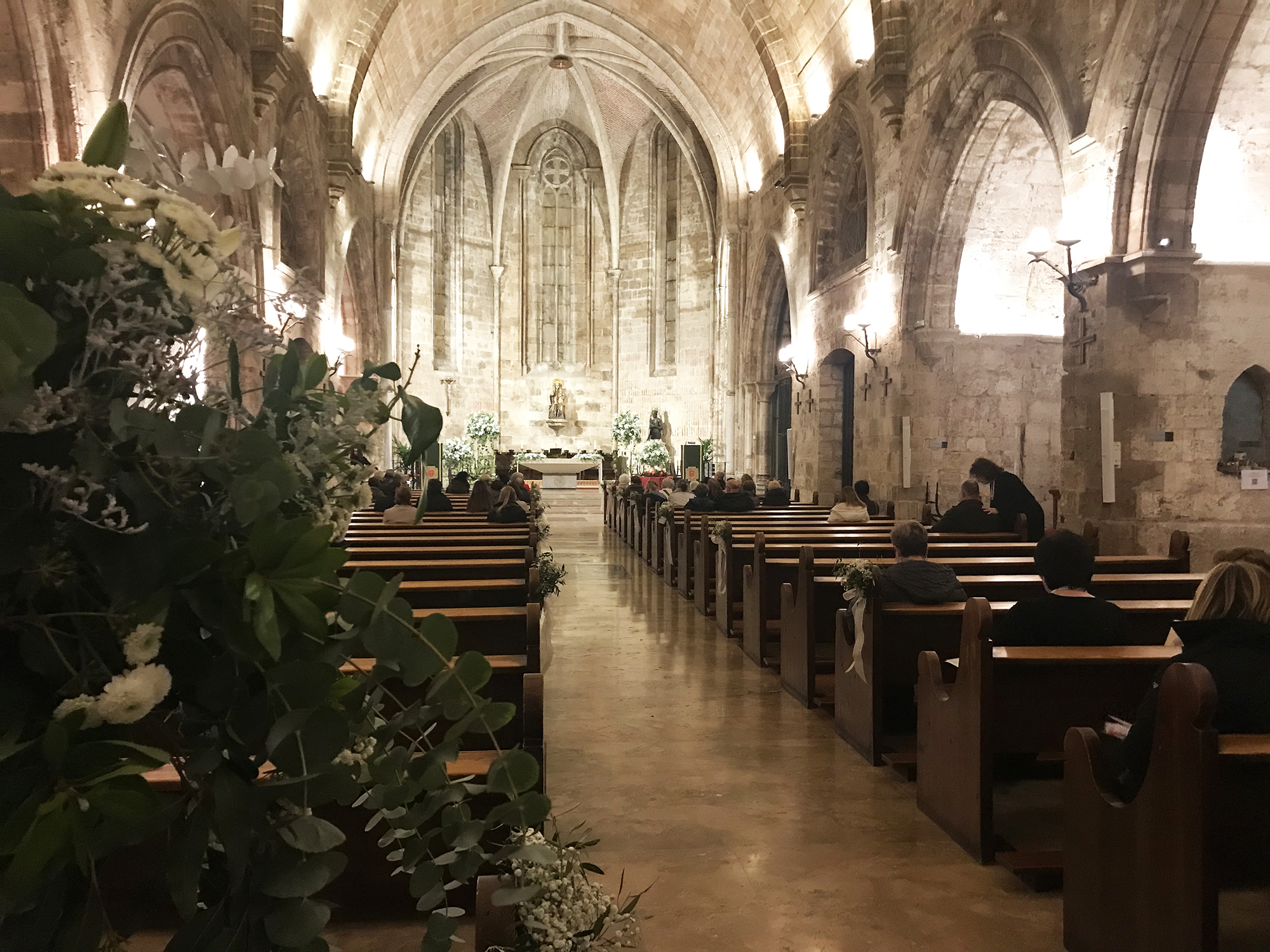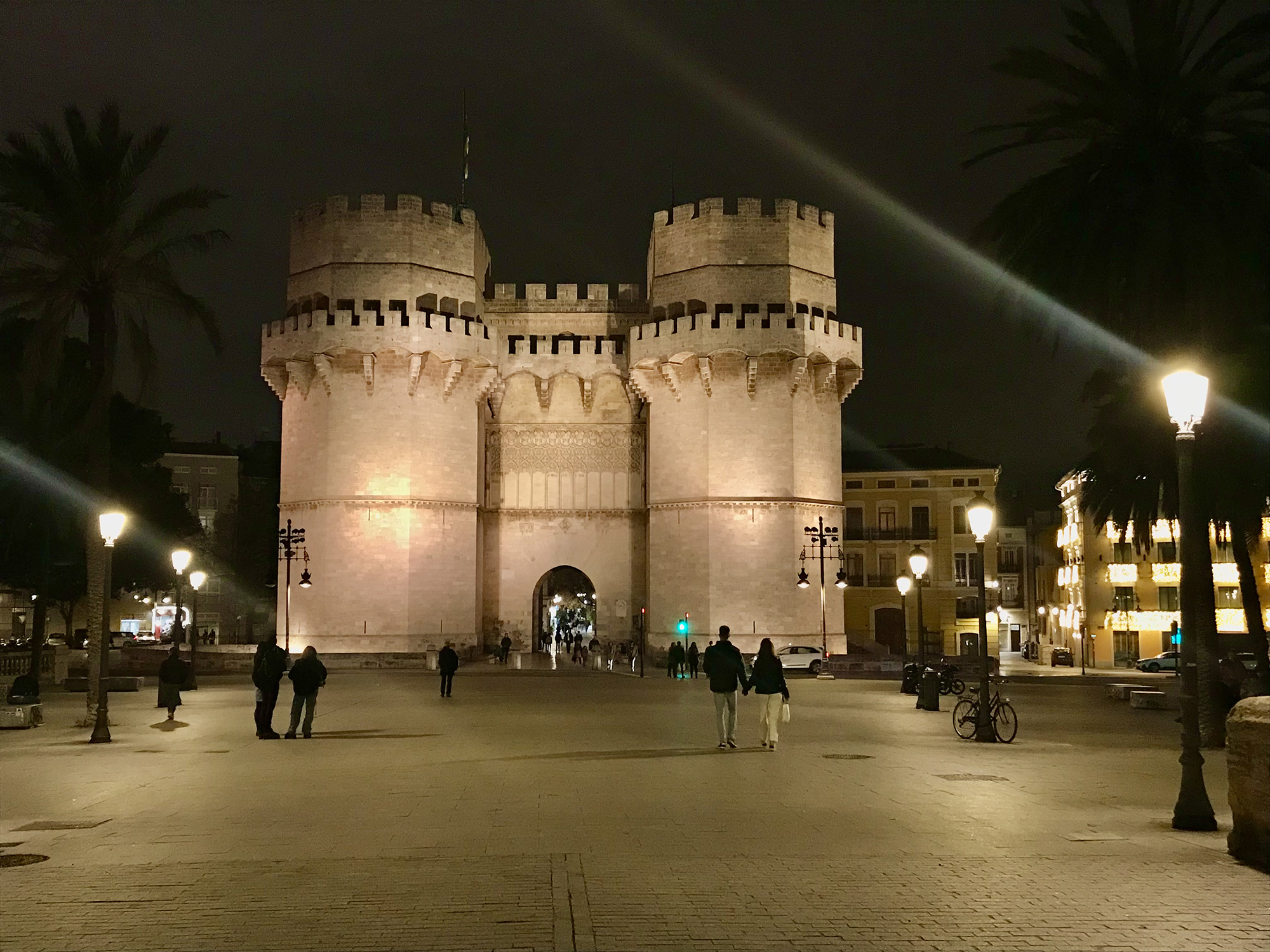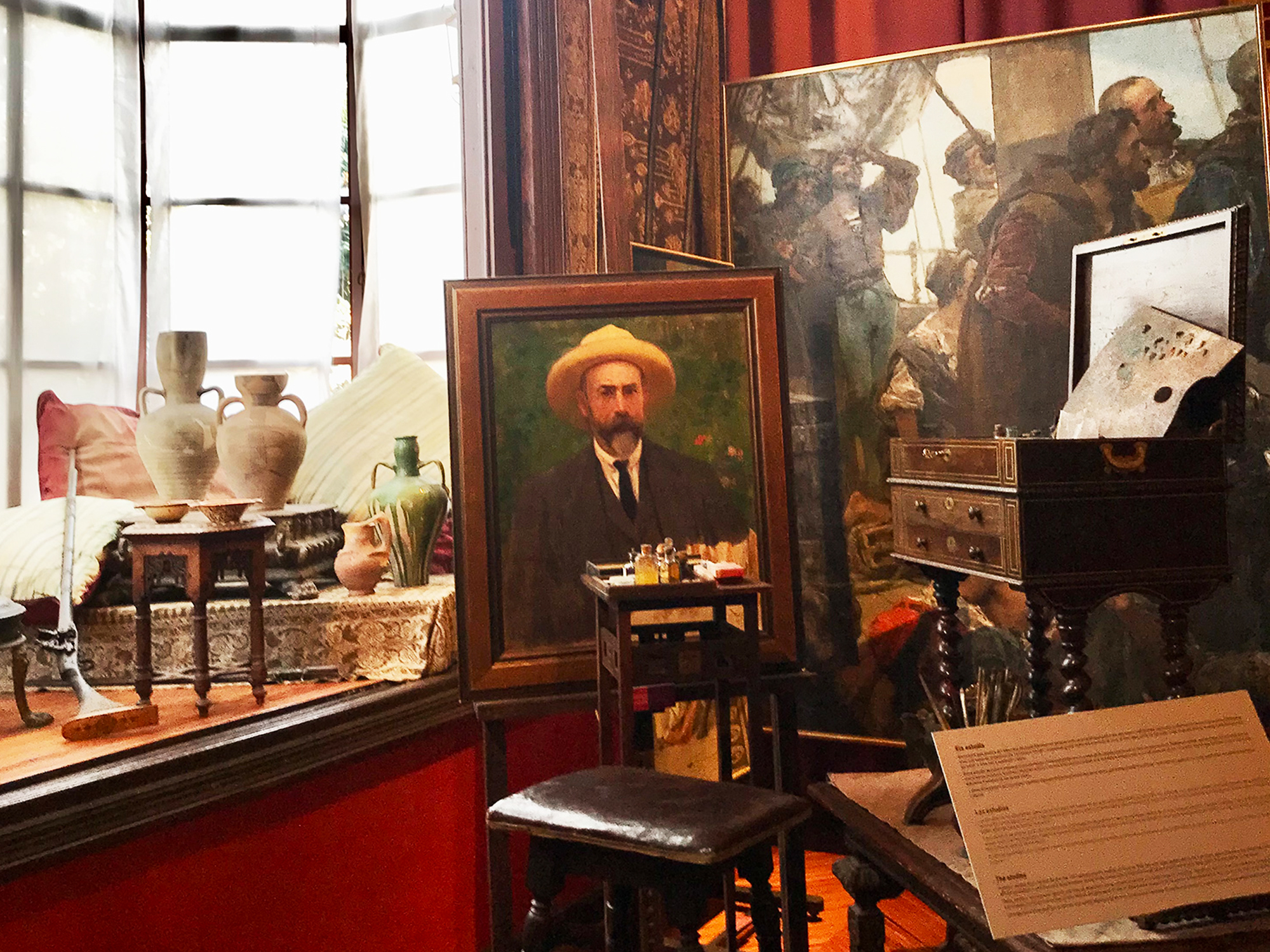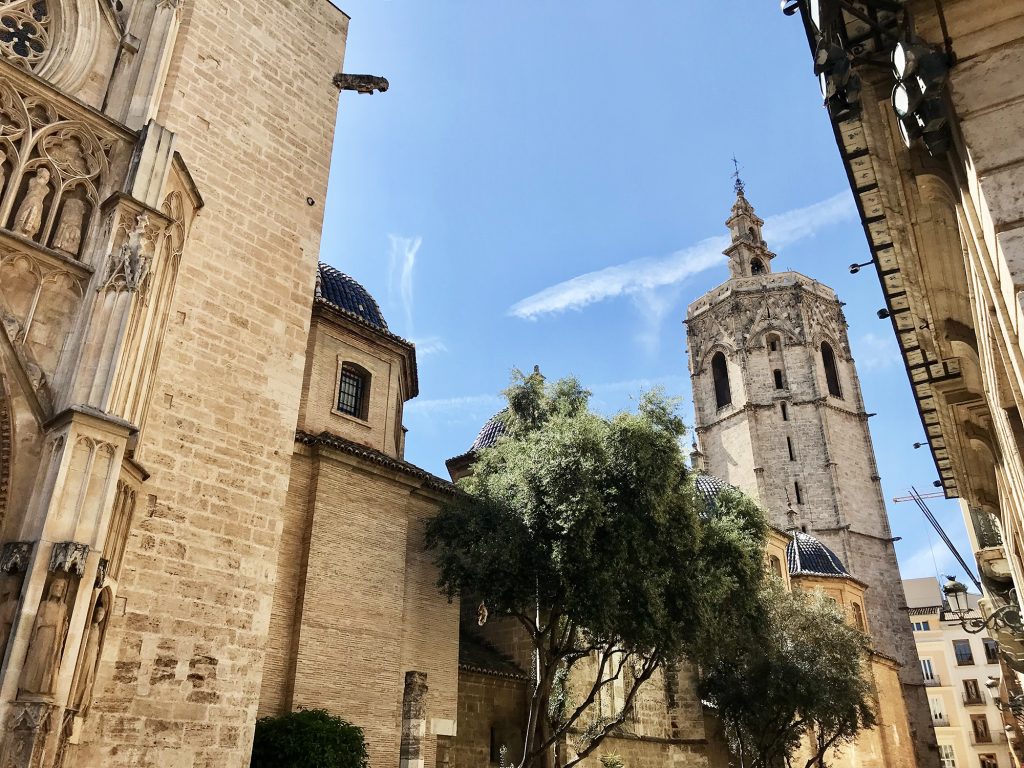
The Catedral de Santa María de Valencia, popularly called “La Seu” is located right in the heart of the city, in Plaza de la Reina. On this place there was a temple dedicated to Jupiter or Diana in the Roman times. On this temple the cathedral was erected, during the Visigothic era. With the Arab conquest, it bacame the headquaters of the Balansiya Mosque, until the 13th century (the Reconquest) when it became a Christian church again.
During the Spanish civil war the cathedral was burned down, part of its artistic elements were lost. Restauration started in 1972. It is the seat of the archbishop of Valencia.
The Holy Chalice
The Holy Chalice (that is connected to the Holy Grail dating from the 1st century) was given to the chatedral by King Alfonso in 1437.
In the cathedral the visitor can find among others a spectacular museum, many relics of saints and stunning Italian paintings from the Quattrocento.
The bell tower called Torre del Micalet (El Miguelete) was built between 1381 and 1429. It is possible to visit, climbing on the 255 steps you can have one of the best views on the city.
Interesting facts
THE BUILDING
- built mainly between the 13th and the 15th century
- its style is mainly Valencian Gothic, but ranging from the early Romanesque, Renessaince, Baroque and Neoclassical styles
- in the Almoina Archeological Center remains of the ancient Visigothic cathedral have unearthed
- stones from Burjassot and Godella neighborhoods were used to build the cathedral, also from Benidorm and Xábia which came by boat
- the Cathedral was rebuilt in 1262 by the local burgeoisie to mark the Christian territory against the Muslims
- in 1931 the cathedral was declared a historic and artistic landmark by the Spanish government
The Holy Chalice
- it is believed by many to be the true Holy Grail
- reserved in one of the cathedral’s chapels
- it has been the offical chalice for many popes
- this chalice with Arabic inscriptions dates from the 1st century
- was given to the Cathedral by King Alfonso V de Aragon in 1436



